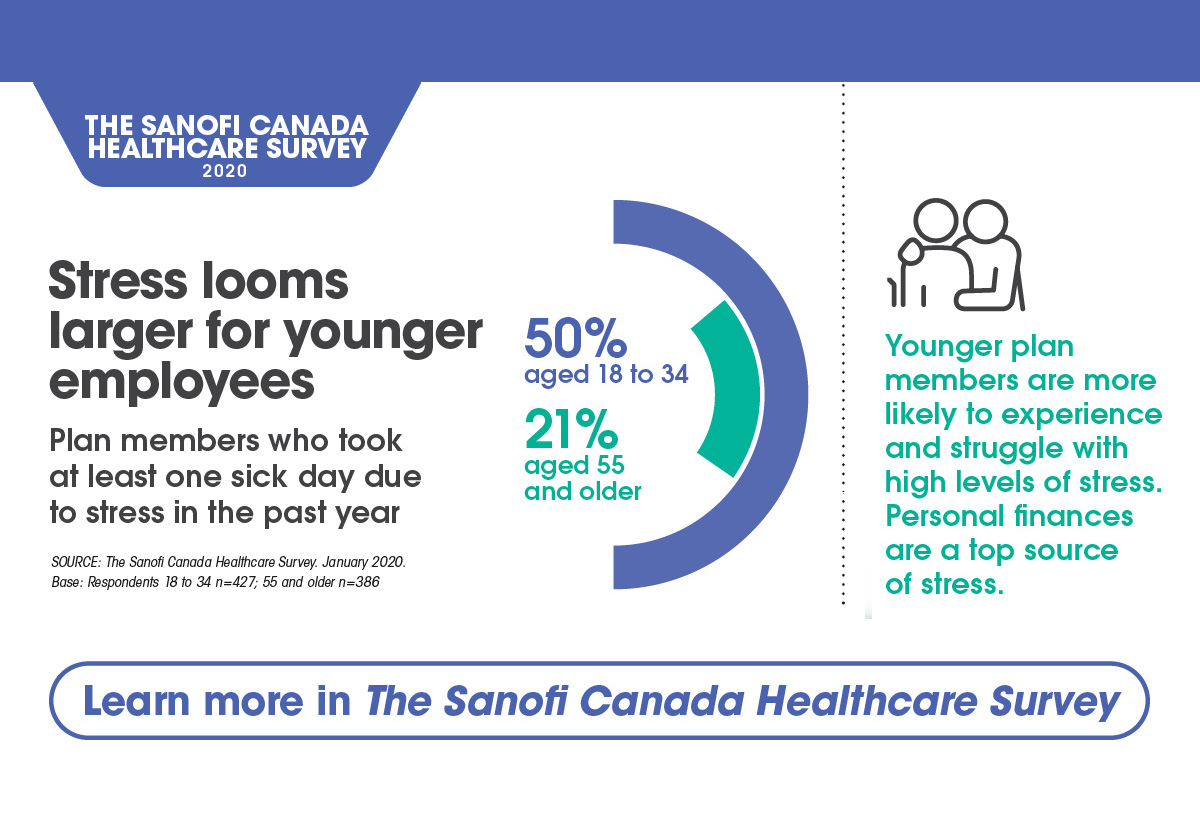Welcome to the sixth of our seven-part Sanofi Insights – a series of articles created to provide you with insights into highlights of the 2020 Sanofi Healthcare Survey results.
Stress is ever-present in the workplace, but managing stress is anything but standard. Although there continues to be a gap between how effective employees feel their employers are in helping them to manage issues around stress and how effective employers view themselves, this gap appears to be closing. From 2011 to 2020, the number of employees who felt their employer was effective in helping them manage stress issues increased from 42% to 61%. Meanwhile, the number of employers who felt their organization was successful on this front also increased, from 58% in 2011 to 74% in 2020. The results are moving in a positive direction, likely as a result of increased awareness of mental health and wellness in the workplace over the last decade. With the trajectory of recent innovation in stress management and virtual health care, there’s significant opportunity to close this gap even further.
Demographics of stress in the workplace
This year’s Sanofi Healthcare Survey zeroed in on the topic of stress. Stress and mental health are intertwined, as prolonged periods of high stress increase the risk for mental health problems such as anxiety, depression, substance abuse, and sleep issues[i]. This has the potential implication of lost time and increased mental health claims.
The incidence of stress among plan members generally continues to be high with close to a third (30%) of respondents reporting high levels of stress on a typical day over the past three months. This appears to be steady, with comparable results (33%) in the 2018 survey. The top three sources of stress identified in the survey were:
- Personal finances (39%)
- Workload (34%)
- Work-life balance (32%)
What’s notable about the survey results is that younger employees, in the 18-34 age range, report the highest levels of stress (34%) and the greatest impacts from stress, compared with those aged 55 and older (22%). They were also more likely to feel physically ill as a result of stress (42%), take sick days due to stress (50%), and arrive late or leave early (47%), compared to those 55 and older (23%, 21%, and 17% respectively).
Looking at work-related stresses, those aged 18-34 were much more likely to indicate the work environment as the main source of stress (42%) than those 55 and older (28%), rather than the job itself, or weigh both equally. The work environment includes factors such as physical space, supervisor, and co-workers.
The disruption to home life brought on by COVID-19 and the financial implications will likely only exacerbate the levels of stress experienced by employees. Plan sponsors should consider increasing access to mental health support by offering digital solutions, increased mental health coverage, and preventative measures such as resilience training.
Written by Melissa Fallis, Wellness Coordinator, Health Solutions at People Corporation, with insight provided by Shannon Darvill, Consultant at Silverberg Group, a People Corporation Company, and a Sanofi Canada Healthcare Survey Advisory Board Member.
[i] https://www.camh.ca/en/health-info/mental-illness-and-addiction-index/stress
